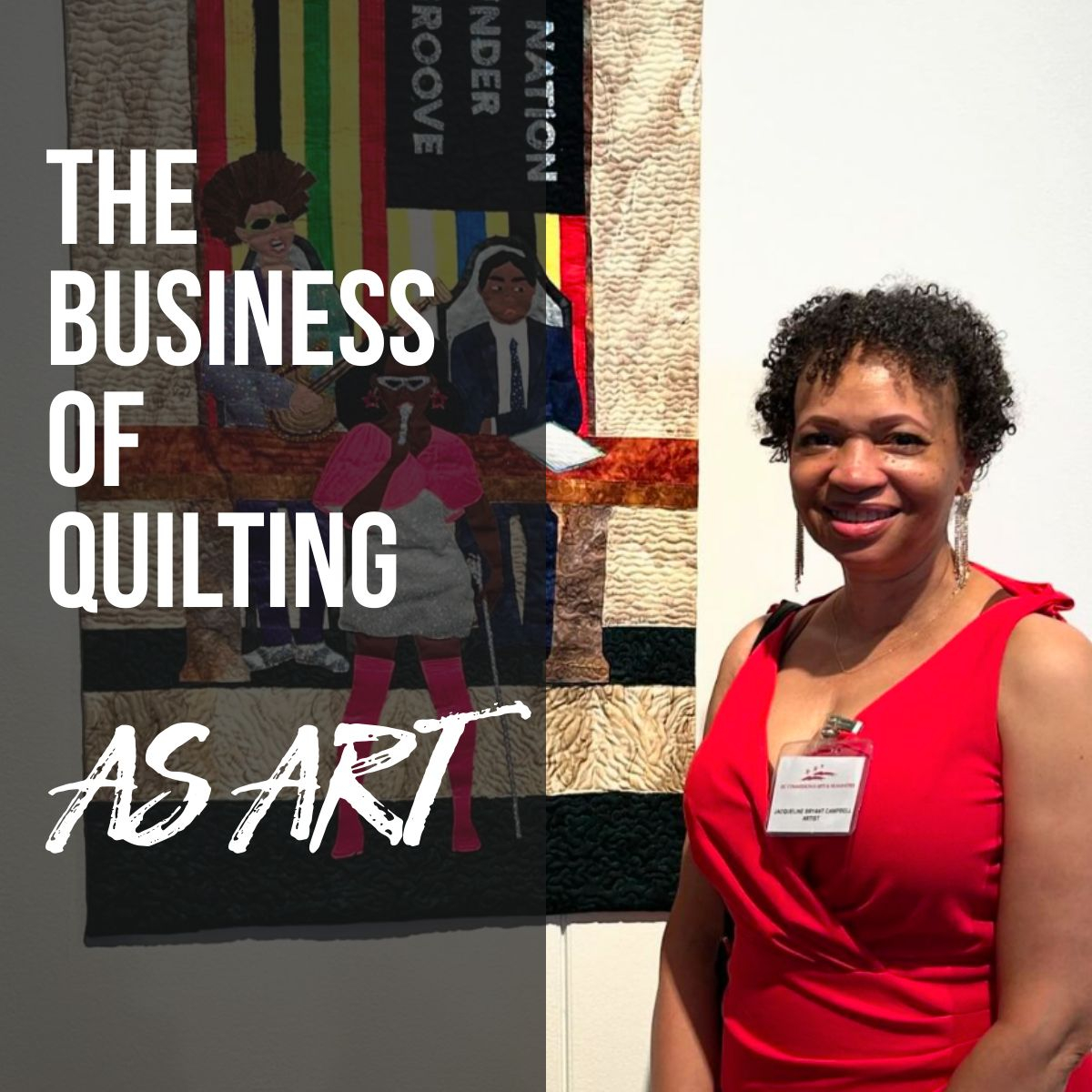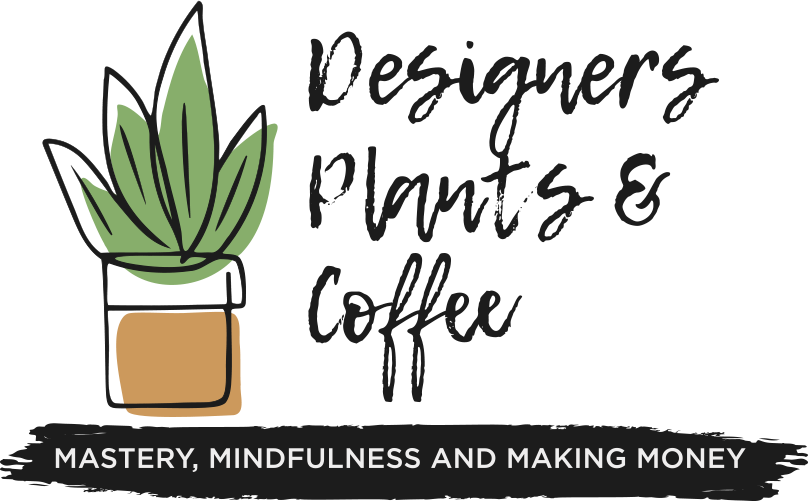

Welcome to the colorful world of quilting, where every piece of fabric has a story and each stitch carries a memory! Meet Jacqueline Bryant Campbell, an amazing quilt artist from Washington, DC, who’s turned her love for quilting into a thriving gig. If you’re into art, love quilting, or just need a little inspiration, you’re going to want to hear her awesome story.
Jacqueline’s quilting journey kicked off in a pretty surprising way—she stumbled upon a catalog with stunning images of brown ballerinas. That beautiful imagery sparked her creativity and pushed her to take a quilting class. Before she knew it, she was crafting quilts that not only showed off her skills but also pointed her toward a career in art. Her story is a great reminder that inspiration can come from the most unexpected places, and taking that first step can totally change your life.
Wanting to support her family, Jacqueline didn’t stop at quilting—she also got into doll-making. Her art isn’t just a hobby; it’s a business fueled by commissions and sales, including impressive projects like big wall hangings for a church. Jacqueline’s journey shows how important it is to be versatile in the arts and how you can blend different passions into a successful career.
One of the big takeaways from Jacqueline’s podcast is how crucial it is to price your artwork correctly. It can be tricky for artists to figure out market value, but Jacqueline stresses finding that sweet spot between base rates and extra charges for more complex work. This know-how helps artists keep their businesses running and ensures they’re getting paid fairly for their hard work.
If you’re thinking about diving into the art world, Jacqueline has some golden advice for you. She emphasizes the need for a solid business plan and taking the time to weigh opportunities carefully. It’s super tempting to say “yes” to every chance that comes your way, but she encourages artists to be discerning to dodge potential issues. Her insights are especially relevant today, when taking risks can feel a bit scary.
Looking back, Jacqueline remembers how much her friends and family supported her during her first event. That encouragement helped ease her fears and allowed her to take the leap into her passion. She also talks about the importance of trust and clear communication in commission work, sharing a cautionary tale about a client who didn’t pay. Her experiences highlight the need to set clear payment terms and keep the lines of communication open to keep things running smoothly.
Jacqueline Bryant Campbell’s journey into the quilting world is filled with inspiration, creativity, and grit. Her story celebrates the art of quilting while offering valuable lessons for anyone wanting to turn their passion into a sustainable business.
Don’t miss out on her fascinating insights! Tune into the podcast to learn more about her artistic journey, the challenges she faced, and the wins she celebrated. Whether you’re a seasoned artist or just curious, Jacqueline’s experiences will motivate you to follow your own creative path and tackle the art world with confidence.
Let’s celebrate the beauty of quilting and the stories behind each piece—because every quilt tells a tale, and every artist has a journey worth sharing!
We want to hear from you! If this episode inspired you in anyway take a screen shot of you listening on your device and post it to your Instagram stories and tag us @designersplantsandcoffee
Jacquline’s info:
Zahiyya
00:00 – 00:06
Welcome to the Designer’s Plants and Coffee podcast where we discuss how to succeed as a designer while staying true to yourself,
00:06 – 00:09
finding peace in the process and making money doing what we love.
00:09 – 00:12
Subscribe on YouTube and wherever you get your podcast.
Naima
00:12 – 00:15
And we have miss Jacqueline Bryant Campbell.
00:15 – 00:18
Jackie is a quilt artist based in Washington, DC.
Zahiyya
00:19 – 00:21
So what inspired you to start your business?
Jacqueline
00:21 – 00:28
It’s probably the early nineties. I had gotten a catalog from G Street Fabrics, and they had this fabric on the cover that had brown ballerinas on.
00:28 – 00:34
Having been a brown ballerina and not finding that representation, I wanted this fabric.
00:34 – 00:36
So I bought, like, 3 yards of it.
00:36 – 00:41
I did not have any idea what I was going to do with it. It was weighing on me. It’s like, I gotta use this.
00:41 – 00:46
And by then, I had a 6 year old and a 2 year old daughter, and so I took a quilting class.
00:46 – 00:51
That quilt was a hit, and I started making more patchwork quilts for people.
00:51 – 00:56
But, I made one for my father and when he opened it, he said, this is art.
00:56 – 01:01
He hung it up and that really changed the trajectory of my quilting.
01:01 – 01:06
Meanwhile, my daughter figured, well, if mommy can make a quilt, mommy ought to be able to make me a doll.
01:06 – 01:08
And so I started making these dolls.
01:08 – 01:13
My mother, like, you know, you do really good work. You could sell this stuff.
01:13 – 01:17
And that’s how I got into the business of it.
Zahiyya
01:17 – 01:19
So in that, how did you stay motivated?
01:19 – 01:22
And was that your only source of income at the time? Yes. So that’s motivation?
Jacqueline
01:22 – 01:23
That’s my motivation. Yes.
Zahiyya
01:23 – 01:29
The quotes, do you just do them on a commission based, or do you just make them and sell them as is?
Jacqueline
01:29 – 01:32
It’s both. And these are wall hangings.
01:32 – 01:44
The one that I finished for the church that Naima mentioned, it was 2 panels that were each 6 and a half feet high by 3 feet. So they’re huge. And so that was a commission.
01:44 – 01:48
I worked with this church on this project for over a year.
Naima
01:48 – 01:52
I think everybody would like to know what inspires your work?
Jacqueline
01:52 – 02:00
It is as simple as these fabrics were all stacked up together for weeks, And finally, they said, hey.
02:00 – 02:01
We would very much like to be a face.
02:01 – 02:05
One of my favorite photos of me with my mother when I was a little.
02:05 – 02:12
And so I did a version of that, and that piece really struck a nerve with a lot of folk.
02:12 – 02:22
And one of the things that I guard really, really closely is a photo album that belonged to my great grandmother of pictures
02:22 – 02:25
that were taken when she was in high school and college.
02:26 – 02:33
Bringing those pictures to life has been a thing that has been ongoing for the last several years.
Zahiyya
02:33 – 02:37
How would you suggest someone start a business doing what you do?
Jacqueline
02:37 – 02:45
Naeema and I both will say to other people when we’re at events, when they are underpricing their work, like, you need to raise your prices.
02:46 – 02:54
And we both have struggled with accurate pricing as well because you don’t know what the market will bear, but you also don’t
02:54 – 02:57
wanna overprice yourself, you know, so that people just kind of walk away.
02:57 – 03:01
And so finding that sweet spot is really kind of a trial and error.
03:01 – 03:04
There’s a base level, and then there’s the complexity effect.
03:04 – 03:08
So if what you want is pretty straightforward, it’s this rate.
03:08 – 03:15
But if it’s going to require me to do a lot of gymnastics, we’re gonna have a higher rate for that.
Zahiyya
03:15 – 03:17
Because I I’ve learned that over the years.
03:17 – 03:19
This is like usually when they say, okay. It’s like, okay.
03:19 – 03:21
Next time, I need to to raise my price.
Jacqueline
03:21 – 03:27
That is the hardest thing. And and it’s hard to hear people say, oh, that costs too much.
03:27 – 03:29
But you do have to look realistic.
03:29 – 03:32
You know, how much time did I spend on this? How much were my materials?
03:33 – 03:38
Even if you only use stuff you already had, it took you time to make that thing.
03:38 – 03:46
If you have a decent business plan, if you’ve got people around you who have been doing this for a while, who can kind of
03:46 – 03:54
steer you away from some of the more foolhardy things that you might do, like saying yes to every single opportunity that
03:54 – 04:00
comes your your way without fully vetting it and then finding yourself in front of the wrong people.
Zahiyya
04:00 – 04:03
Who would you say was the biggest risk you took in your business?
Jacqueline
04:03 – 04:14
I mean, I think starting was probably the biggest risk, but because I was really trying to find a way, to make some money in a very hostile economy.
04:14 – 04:17
I didn’t have time to really think about that.
04:17 – 04:23
The first event that I was a vendor at, I had one of my girlfriends went with me. 1 of my cousins was with me.
04:23 – 04:27
My mother and several aunts were at the event.
04:27 – 04:31
So I figured if this goes badly, I got my mommy, and it didn’t go bad.
04:31 – 04:37
But because I had kind of that safety net there where if I needed to go cry on somebody’s shoulder, I could.
04:37 – 04:42
It didn’t feel as frightening as it might have if I hadn’t had that.
Zahiyya
04:42 – 04:46
What’s your criteria of, like, okay. No. I’m not gonna take this on.
Jacqueline
04:46 – 04:49
You know, sometimes it’s hard to to put a finger on it.
04:49 – 04:52
You just get a bad vibe off of somebody.
04:52 – 04:55
I accepted a commission, and I always ask for half up
Zahiyya
04:55 – 04:55
front.
Jacqueline
04:55 – 05:00
Throughout the making of the piece, you know, I would send her pictures of fabrics.
05:00 – 05:07
When the piece was done, I let her know and that she should pay me the rest of the money, and I didn’t hear from her. So I sold it.
LaTisha
05:07 – 05:15
Going forward, putting that in your agreement that if, once it’s done, payment is due within such and such days, you’ll charge
05:15 – 05:20
them for storage or let them know after 2 to 3 months, I sell it.
Zahiyya
05:20 – 05:24
For those people that interested in Jacqueline’s work, please visit her online.
05:24 – 05:26
We will have all of the links in the show notes.
LaTisha
05:26 – 05:40
I’m Leticia Winston of Keeping You in Stitches along with Naima Dozier of Fearless Threads, and Zahia of Cover Me Chic in Regent Design, and Jackie, our guru. We’ll see you next time.
Subscribe to our newsletter with stories from our experience in the fashion industry and the best design tips.

We publish bi-weekly on Friday’s at 7am.